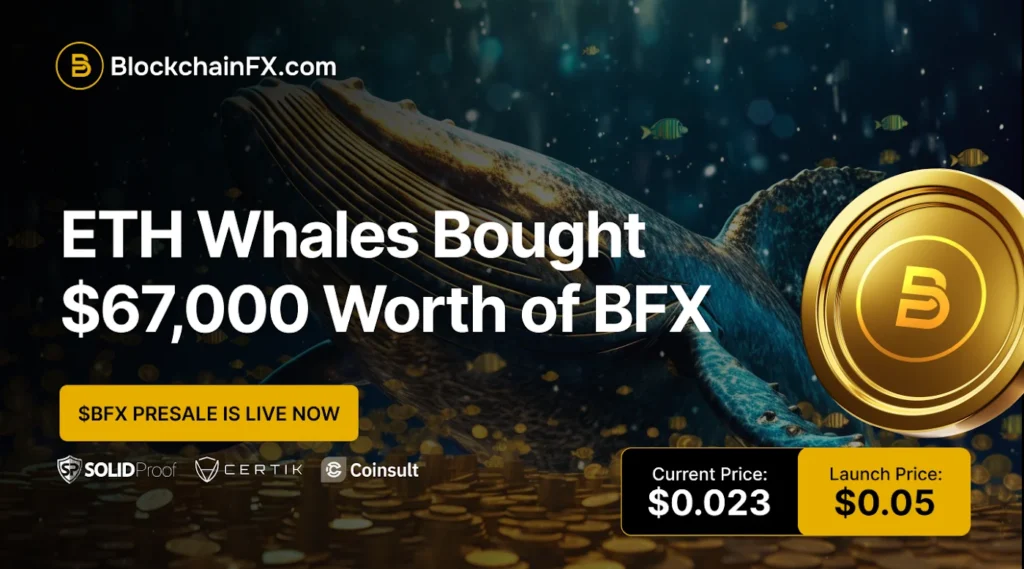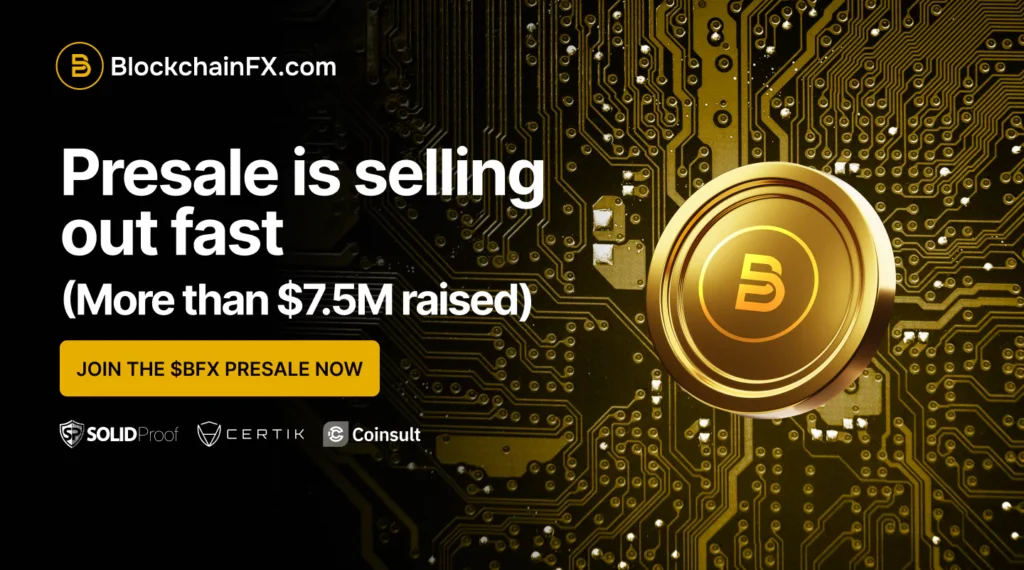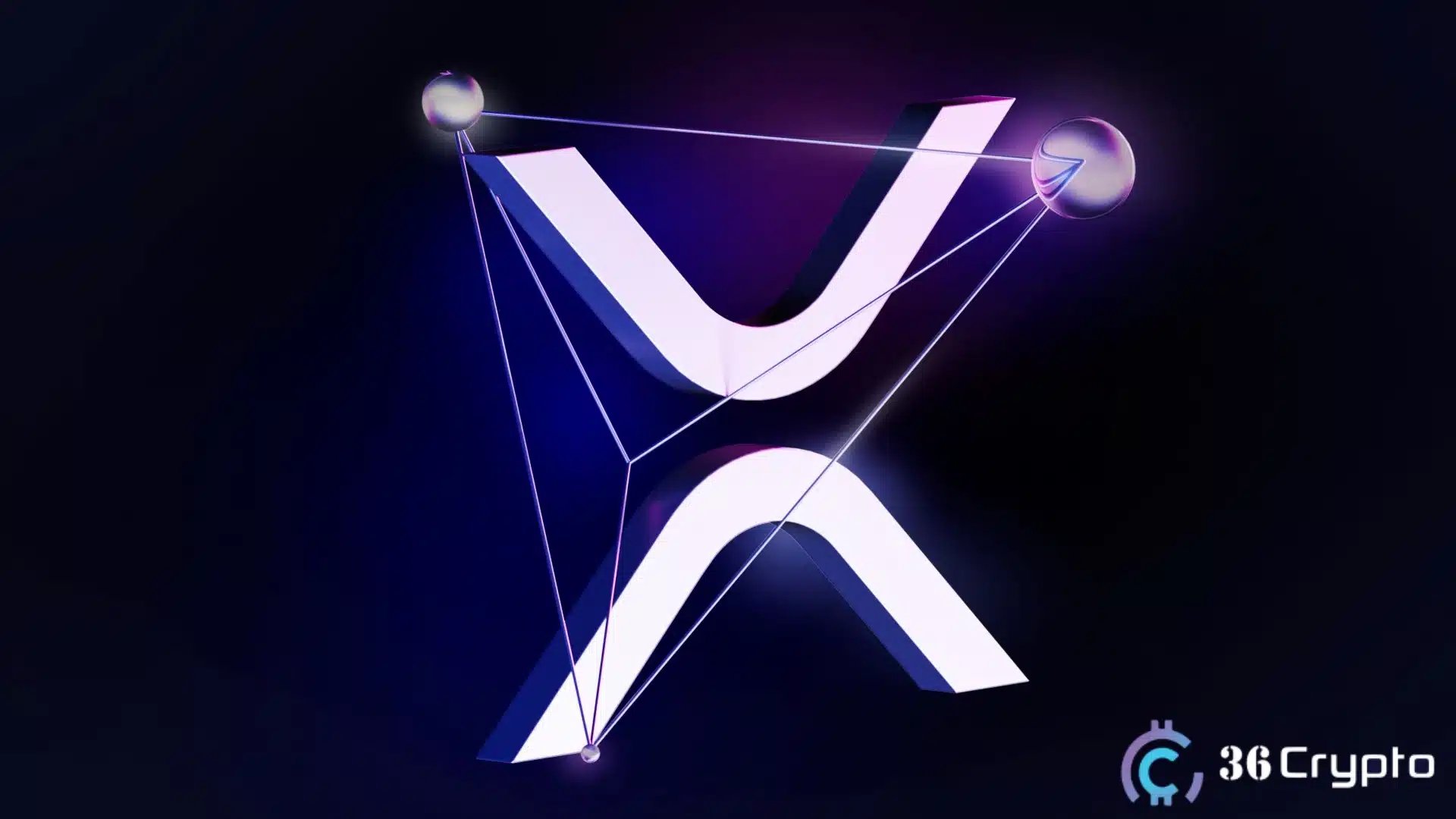BFX Presale Raises $7.5M as Solana Holds $243 and Avalanche Eyes $1B Treasury — Best Cryptos to Buy in 2025

The crypto market is entering another pivotal moment. Institutional money is flowing in, presales are heating up, and investors are once again asking the timeless question: which are the best cryptos to buy right now? Three names dominate this conversation — Solana (SOL), Avalanche (AVAX), and BlockchainFX (BFX). Each offers a different type of opportunity, from the institutional heavyweight to the innovative challenger.

BlockchainFX (BFX): The Rising Challenger
While Solana and Avalanche are established names, BlockchainFX is the new contender aiming for exponential returns. Currently in its presale phase, BFX has already raised over $7.5 million from nearly 10,000 participants, with tokens priced at just $0.024 and a planned launch price of $0.05. Investors who act early can also use the bonus code BLOCK30 to receive 30% more tokens — a deal that has added serious momentum to the presale.

What makes BFX stand out is its utility beyond hype. The project is building a super app that will allow users to trade not just cryptocurrencies, but also forex, stocks, ETFs, commodities, and even bonds. This unified platform bridges traditional finance and Web3, something Solana and Avalanche have yet to achieve. On top of this, up to 70% of the platform’s trading fees will be redistributed back to token holders as daily rewards in both BFX and USDT. That means investors are not only betting on price appreciation but also earning passive income from the platform’s success.
With its audited smart contracts, KYC-verified team, and a $500K giveaway designed to boost community engagement, BFX is quickly emerging as one of the most talked-about best cryptos to buy in presale markets.
Solana: The Institutional Favorite
Solana has fought through its early struggles and come back stronger than ever. It now boasts an ecosystem valued at over $17 billion, with activity in DeFi, NFTs, and payments continuing to expand. More importantly, Solana has captured the attention of institutions. Recent acquisitions worth hundreds of millions from firms like Galaxy Digital, combined with billion-dollar commitments from major corporations, signal that big money is here to stay.
At the time of writing, Solana trades around the $243 range, showing resilience in a volatile market. Analysts expect that if momentum holds, Solana could climb toward $270–$300 in the coming months. While this makes Solana one of the safest bets among the best cryptos to buy, its already large market cap limits the possibility of explosive 100x-style gains. For long-term stability, however, few can argue against its position.
Avalanche: Building Its Institutional Bridge
Avalanche has also been making waves, particularly with its bold push toward institutional adoption. The Avalanche Foundation is working to raise around $1 billion to establish treasury vehicles in the US, a move that could provide steady demand for AVAX. On top of that, an application for a spot AVAX ETF has been filed with the SEC, which, if approved, could open the floodgates for regulated investment in Avalanche.
AVAX has recently surged double digits amid broader altseason excitement. Its subnet model, scalable smart contracts, and growing presence in real-world asset tokenization are drawing attention. Avalanche still carries some regulatory uncertainty, but its positioning makes it a strong contender in discussions about the best cryptos to buy for investors looking for growth backed by solid infrastructure.

Final Thoughts
Choosing between Solana, Avalanche, and BFX depends on your appetite for risk and reward. Solana gives you the security of an established ecosystem. Avalanche positions itself as the institutional growth story of tomorrow. And BFX, still in presale, carries the boldest potential — a token designed for real-world use cases, daily rewards, and rapid growth once it hits exchanges.
In a market where timing is everything, missing out on early entries has historically been the biggest regret for crypto investors. Whether you choose the proven safety of Solana, the growing institutional story of Avalanche, or the explosive potential of BFX, these three undeniably rank among the best cryptos to buy heading into 2025.
For More Information:
Website: https://blockchainfx.com/
X: https://x.com/BlockchainFXcom
Telegram Chat: https://t.me/blockchainfx_chat
También te puede interesar

Crypto Wealth Isn’t Determined by How Hard You HODL – It’s About How Smart You Work (Op-Ed)

Here is the Significance of Ripple’s CEO’s Recent Comment on XRP
